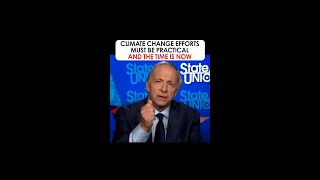| Climate activists talk a lot about following “the science” around climate change. What actually is the science and how is it calculated? Read more here: https://econ.st/3ci07Qy
Find our school briefings series here, including our recent climate explainers: https://econ.st/2Zeo7kV Sign up to receive The Economist’s fortnightly newsletter to keep up to date with our latest coverage on climate change: https://econ.st/3dZrKz6 Find The Economist’s most recent climate-change coverage here: https://econ.st/2X74b0w Covid-19 presents an opportunity for countries to flatten the climate curve: https://econ.st/3em6YKn Read about the pressure to make the post covid-19 rebound green: https://econ.st/2XA7NbF Why the world urgently needs to expand its use of carbon prices: https://econ.st/2ZJdtmu Humans’ dependence on fossil fuels is heating up the planet at an unprecedented rate. Governments and policymakers must take urgent action. That action is guided by what science says about the impact of climate change on the Earth. This is how it’s calculated. This is Vilhelm Bjerknes. At the end of the 19th century he devised formulas which linked the flow of heat, water and air. 50 years later his ideas were the basis of the first computer model of the atmosphere. And modern-day weather forecasting was born Today’s climate models are the highly evolved descendants of that original, except the computers are some 25trn times faster. Here’s how it works Scientists divide the Earth’s atmosphere into a grid of hundreds of thousands of cells, in stacks like a skyscraper. The models then calculate how energy, air and water vapour flow through each cell over a given time period. While weather forecasting takes a snapshot of the atmosphere at a given time and predicts what will happen over the next few days Climate models consider the atmosphere’s behaviour over years and years simulating either the world as it is or the world as it might be. For all their complexity, these models have limitations. This means the models often struggle to capture details like cloud cover. And clouds play a key role in climate. As greenhouse gases make the atmosphere warmer they change the amount of water vapour it can hold and how air rises and falls. That in turn changes the amount and character of cloud cover. Depending on where clouds form, they can either trap sunlight which warms the planet, or reflect it back into space, cooling it. And some processes which govern cloud formation work on a very small scale. Dozens of these models exist, run by teams all over the world Every few years the models are brought together fed standardised questions and then their results are compared. This helps scientists understand the strengths and weaknesses of different climate models, and improves them. Of course, it’s impossible to assess the models’ future projections. But what researchers can do is compare the success of models from previous decades. A recent report compared the models from the 1970s to the 2000s. The climate models are getting increasingly complicated capturing more aspects of the Earth. But there is one element that is impossible to model. And it is the biggest contributor to climate change. Instead, scientists take simplified results from these climate models and run them through economic models. In 2013 scientists used these models to examine the effect of different climate policies on the future temperature of the planet. The first looked at what would happen if there was continued large-scale use of coal. The second, if there was continued use of fossil fuels but some use of renewable energy. The third, if there was a much higher uptake of renewable energy. And the fourth if there was a lot of use of carbon-capture technology and more land to grow biofuels. Climate models don’t predict the future and they’re not perfect. There is a long way to go before they fully represent all of Earth’s intricate processes. But for now they are the only way that scientists have of understanding how damaging an increase in carbon dioxide will be for the planet. |
Tags:







































